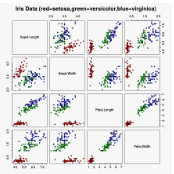
Automatically verifying the identity of a person by means of biometrics is an important application in day-to-day activities such as accessing banking services and security control in airports. To increase the system reliability, several biometric devices are often used. Such a combined system is known as a multimodal biometric system. This paper reports a benchmarking study carried out within the framework of the BioSecure DS2 (Access Control) evaluation campaign organized by the University of Surrey, involving face, fingerprint, and iris biometrics for person authentication, targeting the application of physical access control in a medium-size establishment with some 500 persons. While multimodal biometrics is a well-investigated subject, there exists no benchmark for a fusion algorithm comparison. Working towards this goal, we designed two sets of experiments: quality-dependent and cost-sensitive evaluation. The quality-dependent evaluation aims at assessing how well fusion algorithms can perform under changing quality of raw images principally due to change of devices. The cost-sensitive evaluation, on the other hand, investigates how well a fusion algorithm can perform given restricted computation and in the presence of software and hardware failures, resulting in errors such as failure-to-acquire and failure-to-match. Since multiple capturing devices are available, a fusion algorithm should be able to handle this nonideal but nevertheless realistic scenario. In both evaluations, each fusion algorithm is provided with scores from each biometric comparison subsystem as well as the quality measures of both template and query data. The response to the call of the campaign proved very encouraging, with the submission of 22 fusion systems. To the best of our knowledge, this is the first attempt to benchmark quality-based multimodal fusion algorithms.
翻译:通过生物鉴别技术自动核查一个人的身份是日常活动中的一项重要应用,例如获取银行服务和机场安全控制。为了提高系统的可靠性,经常使用若干生物鉴别装置。这种综合系统被称为多式生物鉴别系统。本文报告在Surrey大学组织的生物鉴别技术评价运动框架内进行的一项基准研究,涉及面部、指纹和个人认证的Iris生物鉴别技术,目标是在有500人左右的中型企业中应用实际访问控制。虽然多式联运生物鉴别技术是一个很好调查的主题,但没有关于聚合算法比较的基准。为了实现这一目标,我们设计了两套实验:质量依赖和成本敏感的评估。根据质量评估,主要由于设备变化,在原始图像质量变化的情况下,可以进行何种质量整合。成本敏感性评估,针对在有500人的中等规模企业中应用实际访问控制。在软件和硬件故障发生的情况下,多式质量生物鉴别技术的计算方法没有进行精确计算,因此,每套质量算法的计算方法必须具有以下两种方法:不切实际的计算方法,因此,这种算法的算法必须具有以下两种方法。


